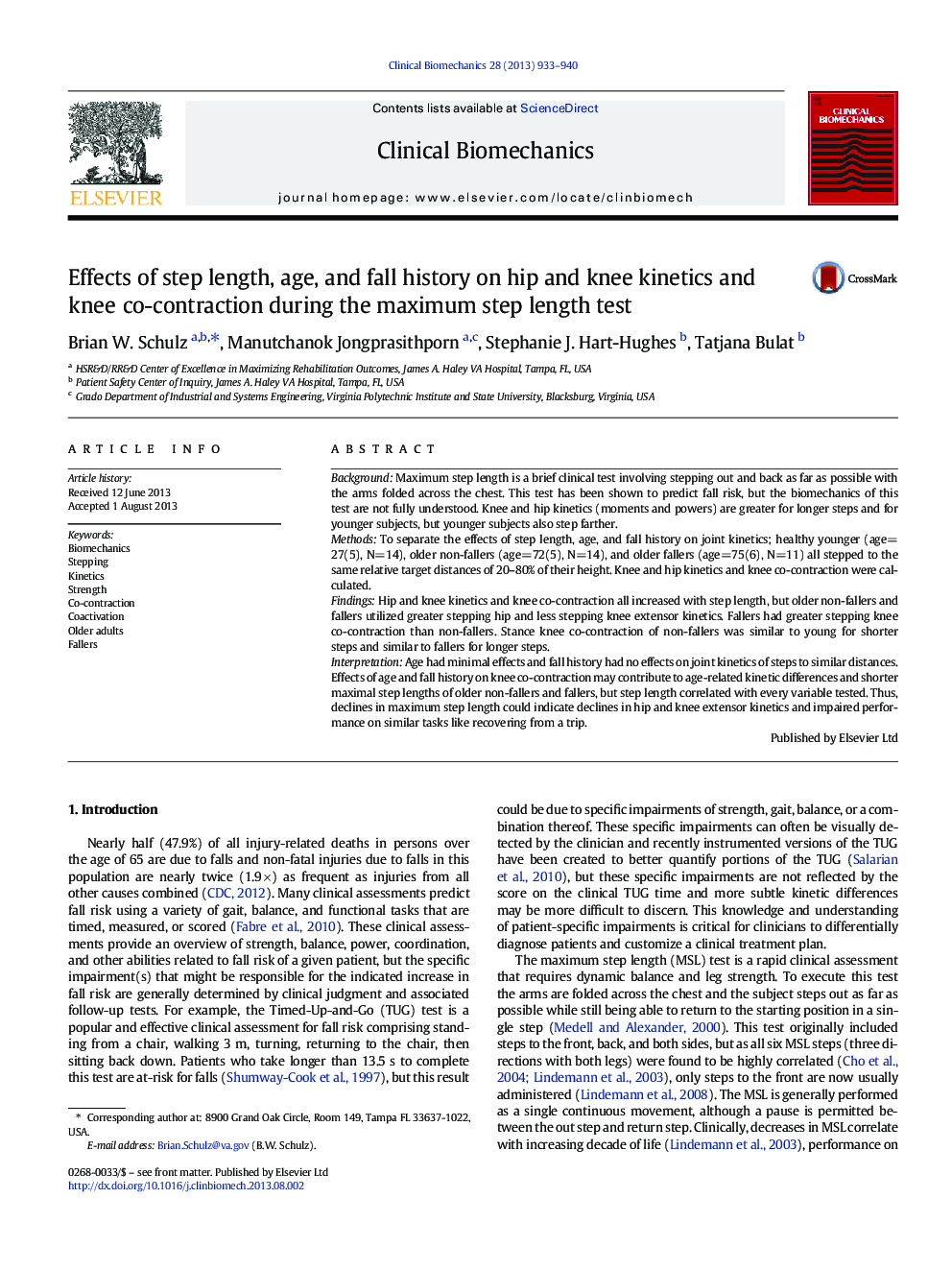| Article ID | Journal | Published Year | Pages | File Type |
|---|---|---|---|---|
| 6205119 | Clinical Biomechanics | 2013 | 8 Pages |
BackgroundMaximum step length is a brief clinical test involving stepping out and back as far as possible with the arms folded across the chest. This test has been shown to predict fall risk, but the biomechanics of this test are not fully understood. Knee and hip kinetics (moments and powers) are greater for longer steps and for younger subjects, but younger subjects also step farther.MethodsTo separate the effects of step length, age, and fall history on joint kinetics; healthy younger (age=27(5), N=14), older non-fallers (age=72(5), N=14), and older fallers (age=75(6), N=11) all stepped to the same relative target distances of 20-80% of their height. Knee and hip kinetics and knee co-contraction were calculated.FindingsHip and knee kinetics and knee co-contraction all increased with step length, but older non-fallers and fallers utilized greater stepping hip and less stepping knee extensor kinetics. Fallers had greater stepping knee co-contraction than non-fallers. Stance knee co-contraction of non-fallers was similar to young for shorter steps and similar to fallers for longer steps.InterpretationAge had minimal effects and fall history had no effects on joint kinetics of steps to similar distances. Effects of age and fall history on knee co-contraction may contribute to age-related kinetic differences and shorter maximal step lengths of older non-fallers and fallers, but step length correlated with every variable tested. Thus, declines in maximum step length could indicate declines in hip and knee extensor kinetics and impaired performance on similar tasks like recovering from a trip.
